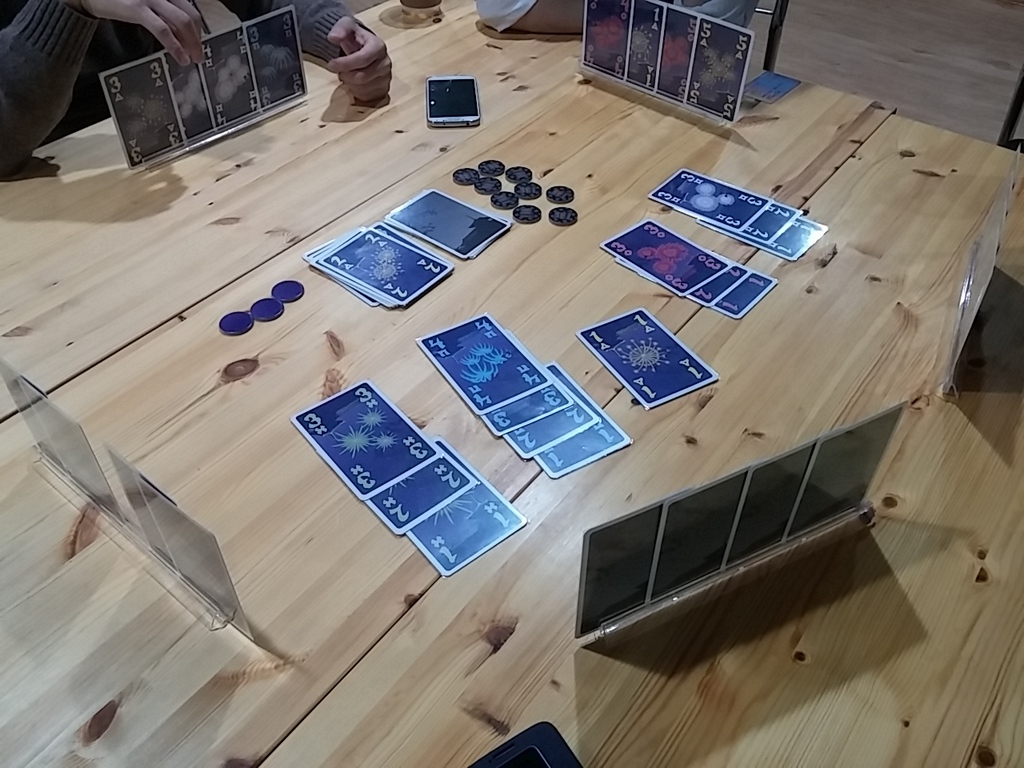Hanabi
Designed by: Antoine Bauza
Hanabi is a co-operative card game (there’s also a deluxe tile version) where players are working together to try and get as many cards as they can out of their hands, and down onto the table.
The theme of the game is a firework display, but really it’s all about comprehending (and potentially remembering) the clues that players give each other. The deck is made up of several sets of cards that are numbered form 1-5 in different colours. The players aim is to try and get all the coloured sets onto the table – in numeric order.
On your turn you have three options – you can give someone else a clue, you can play a card to the table, or you can discard a card. Giving another player a clue is fairly straightforward – you can give them information about either numbers or colours in their hand – for instance, telling them which of their hand is a certain number, which is a certain colour, or even what numbers or colours they don’t have. The only thing to remember here is if you are giving information it must be comprehensive, in the sense that you can’t point to one card and say it’s a certain colour (or number) if that player has other cards of the same colour (or number). You must always give information that addresses the whole hand.
However! Whenever you give a clue, you flip a clue marker over – and there are only nine of them for the whole game! If you play a card to the table, it must be the 1 card of a colour to start a set, or the next numeric value in a set that has already started. If you get this part of the game wrong, a lightening marker gets flipped: there are only three of these, and if the third one gets flipped, the players automatically lose.
The last option is discarding a card. You only want to do this if you’re sure that card has already been played (there are duplicates of all numbers except the 5’s) or another player is going to play it. the benefit of discarding a card is flipping a clue marker back over from its negative side, and potentially giving yourselves more chance of finishing the game.
At the end of your turn you draw a card, and as soon as the draw deck runs out everyone gets one final turn before the highest card on each coloured set is added up for your collective score – the perfect score being a hard-to-get 25!
Sam says
There are different ways to play Hanabi that will be entirely down to the players – but it’s probably worth agreeing in advance: are players allowed to remind each other of information previously given, or not? Are players allowed to make overly-expressive intonations in order to pass on – or attempt to, as this can spectacularly backfire – additional information? Not exploding into my favorite game list by any means, but a fun experience for gamers and ‘non-gamers’ alike.
-

Take That!
None, although the game does try and engineer misunderstandings between players.
-

Fidget Factor!
None. You need to be alert!
-

Brain Burn!
How much depends on how you play and whether you want to play Hanabi as a test of memory as well as logic.
-

Again Again!
It's easy to learn (if harder to master) and plays quickly. It also has some additonal extras in a rainbow suit of numbers that can be added in different ways.




